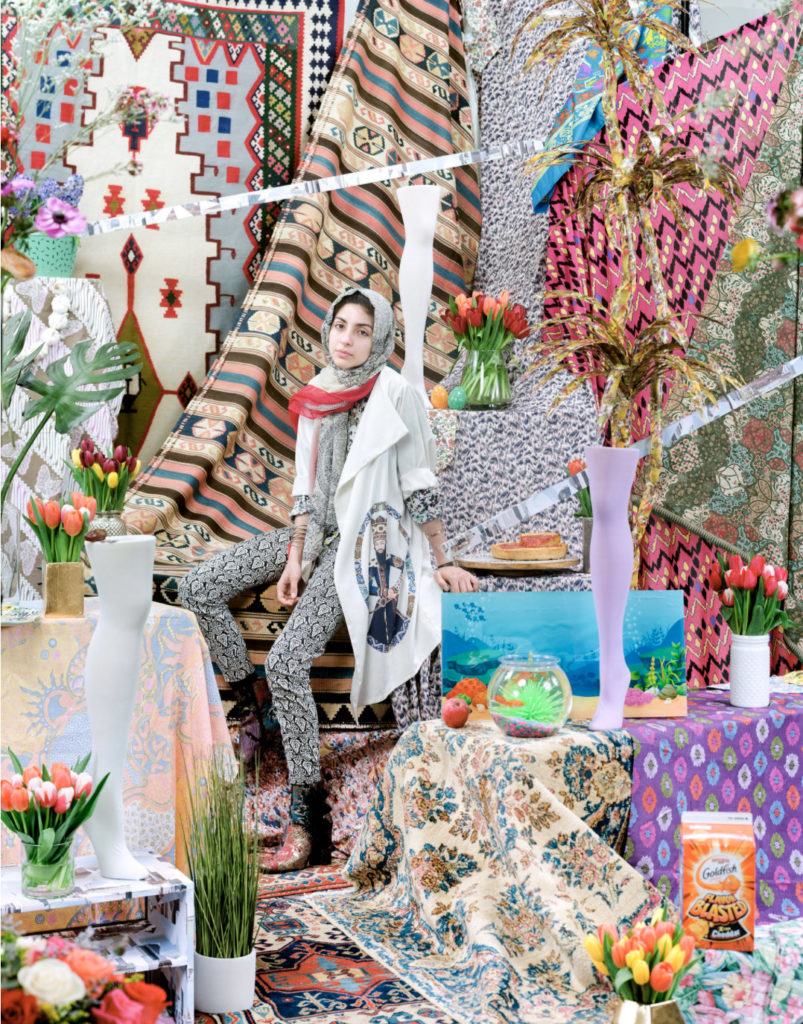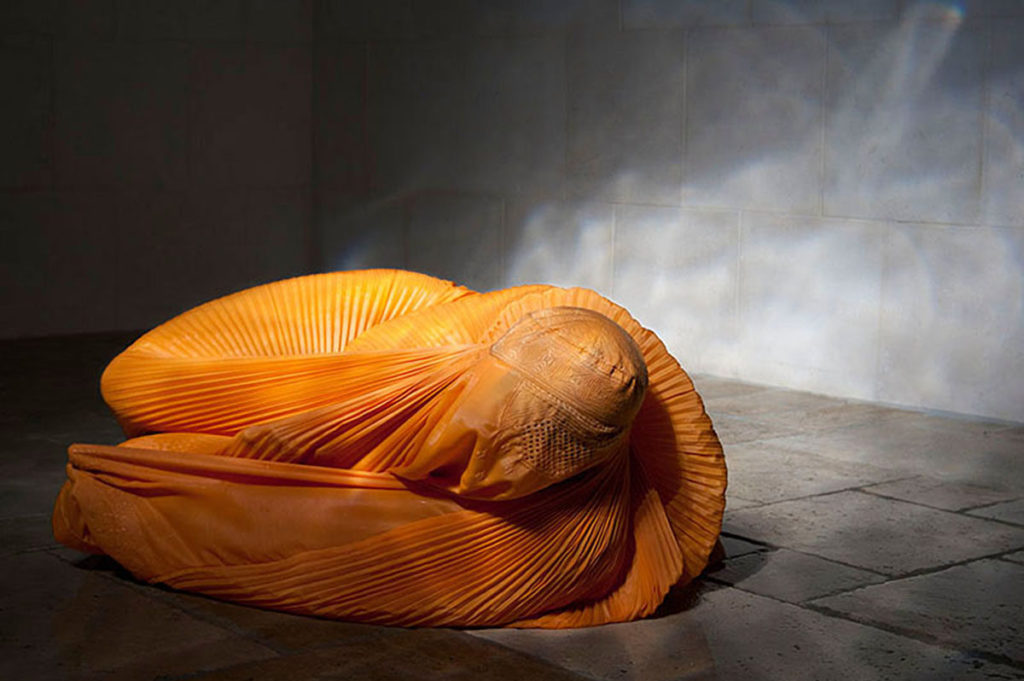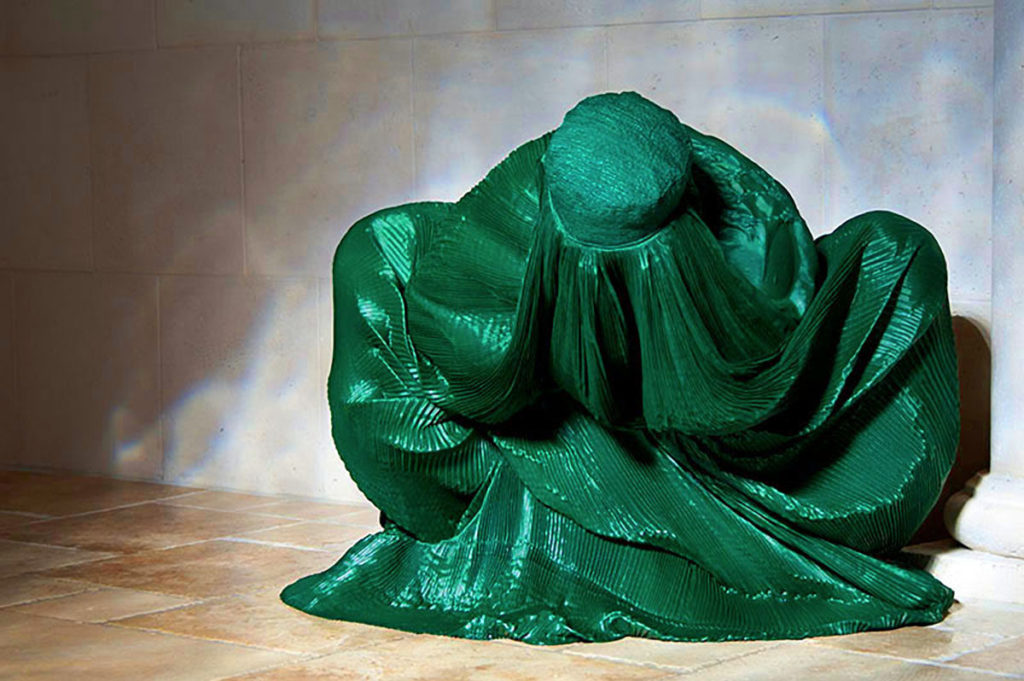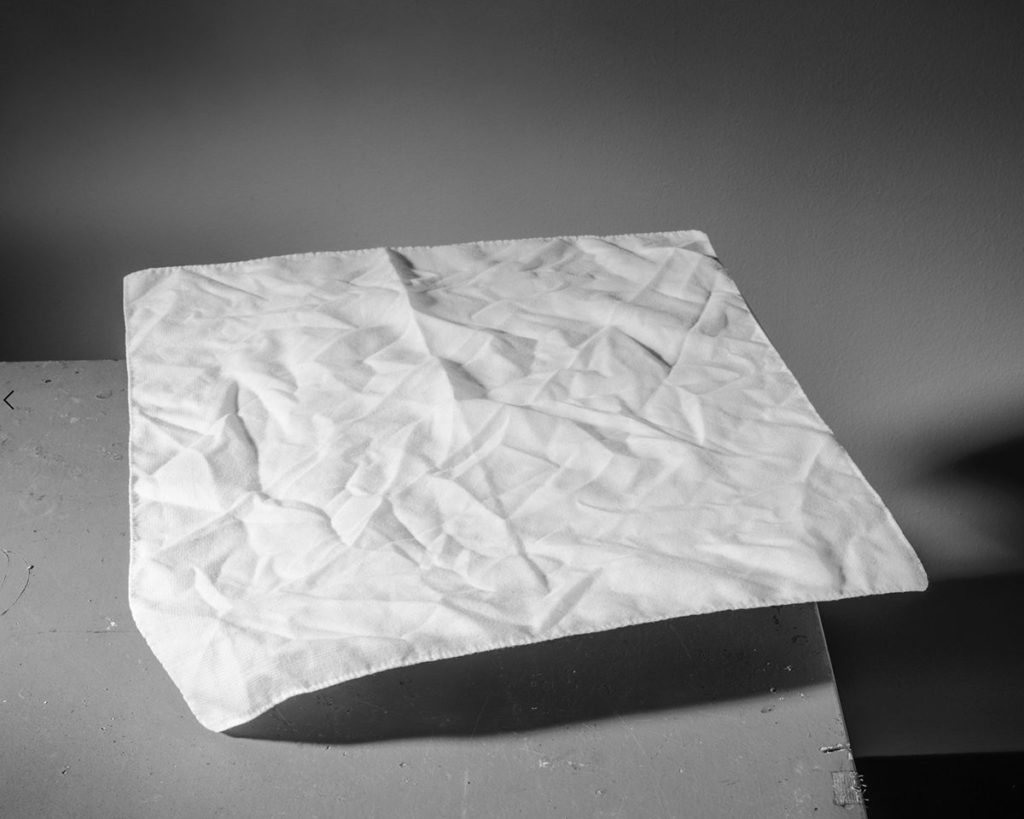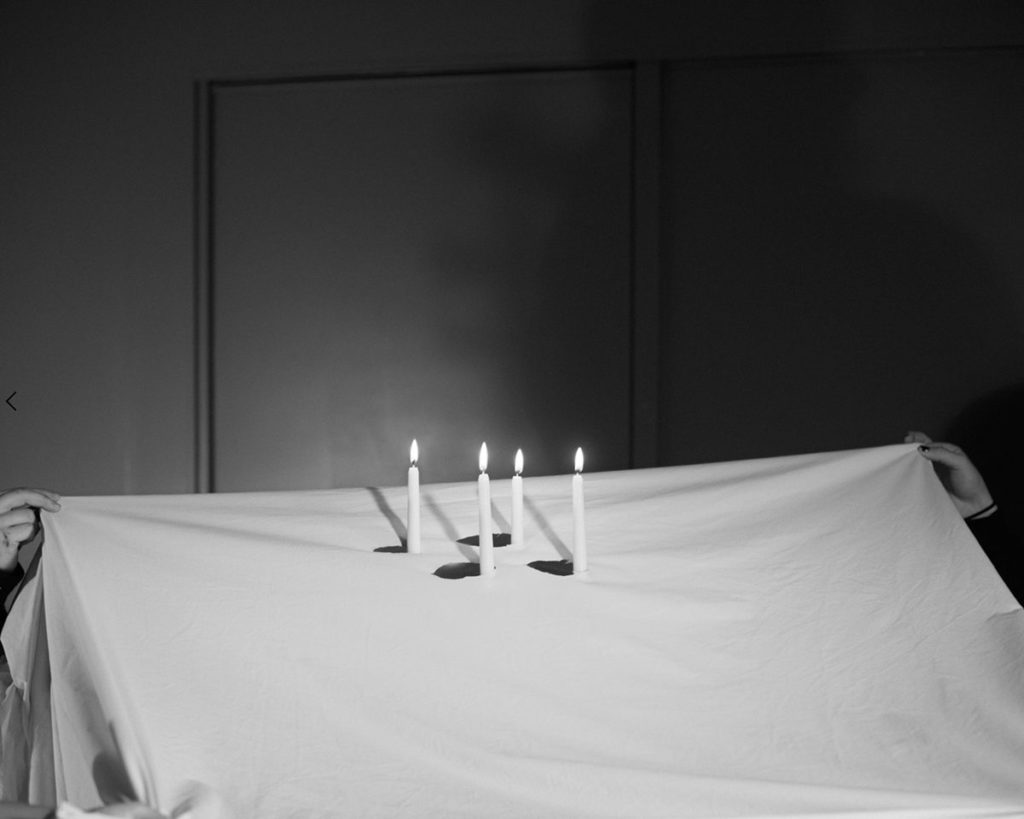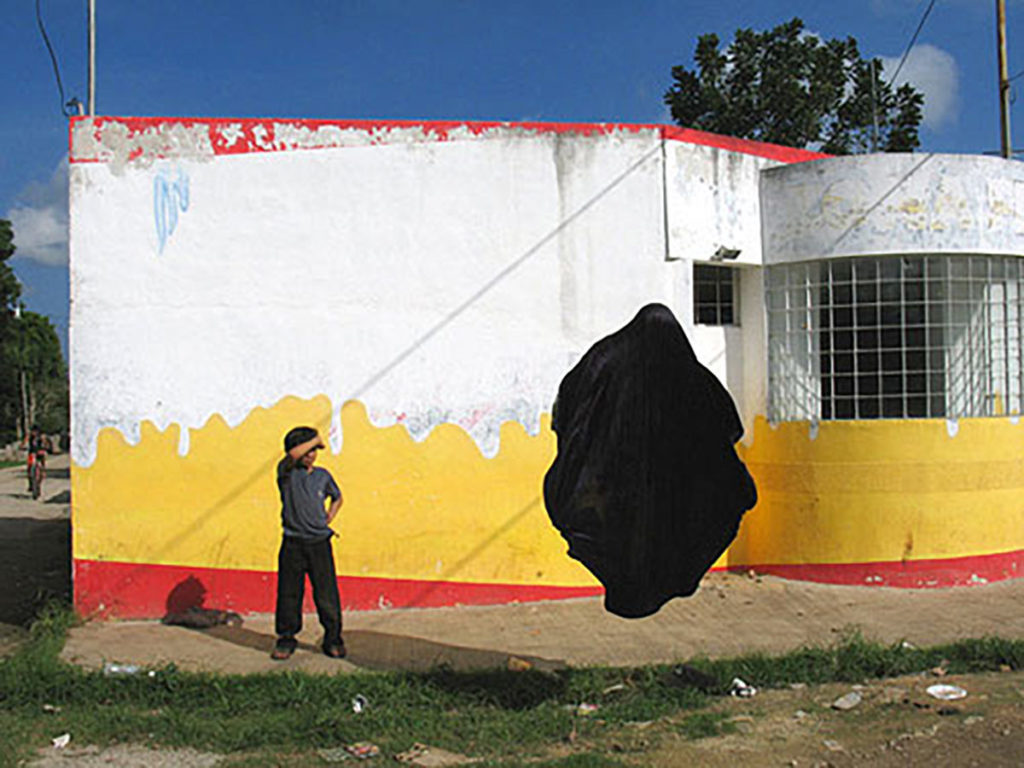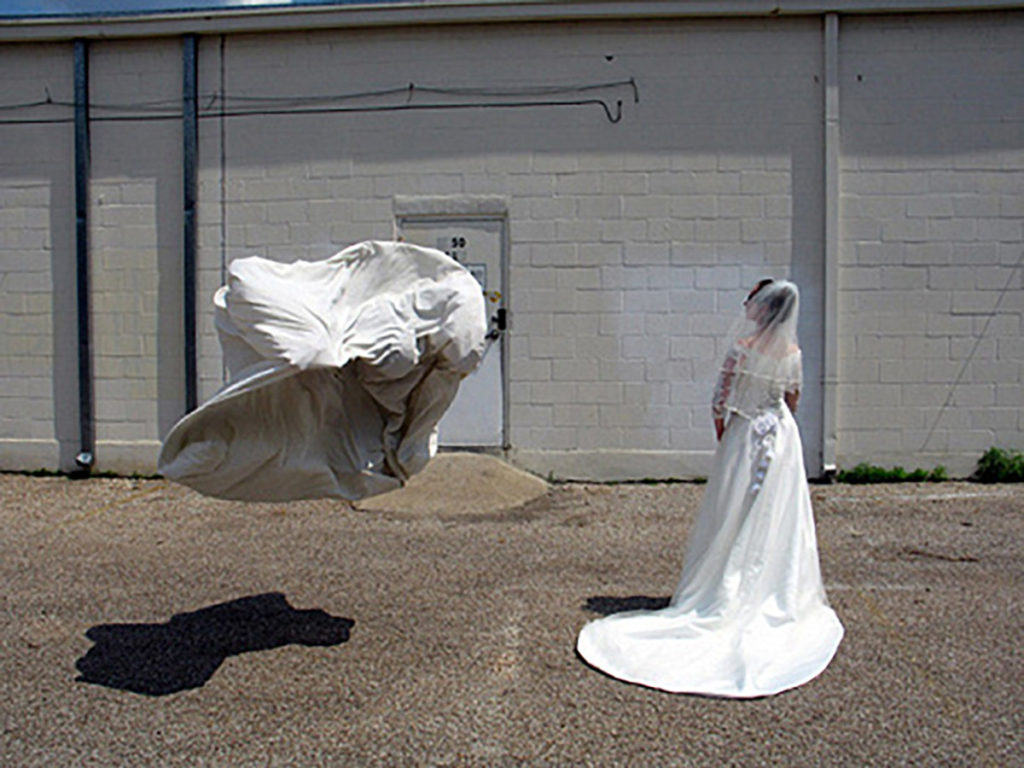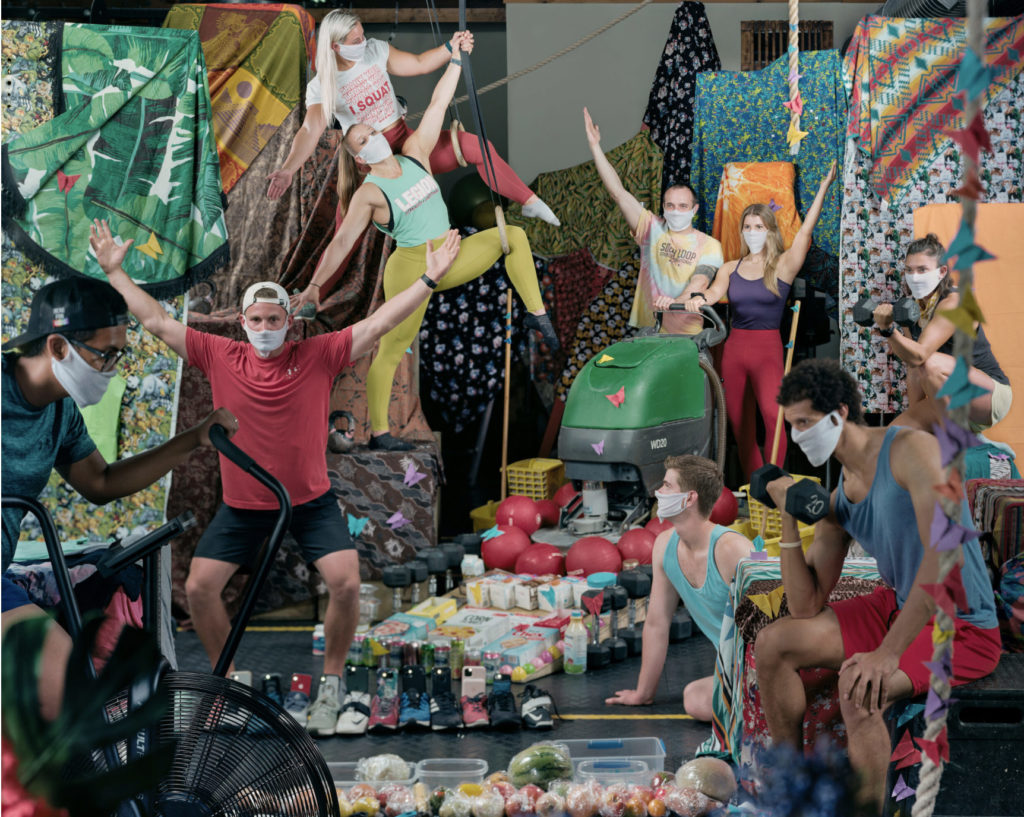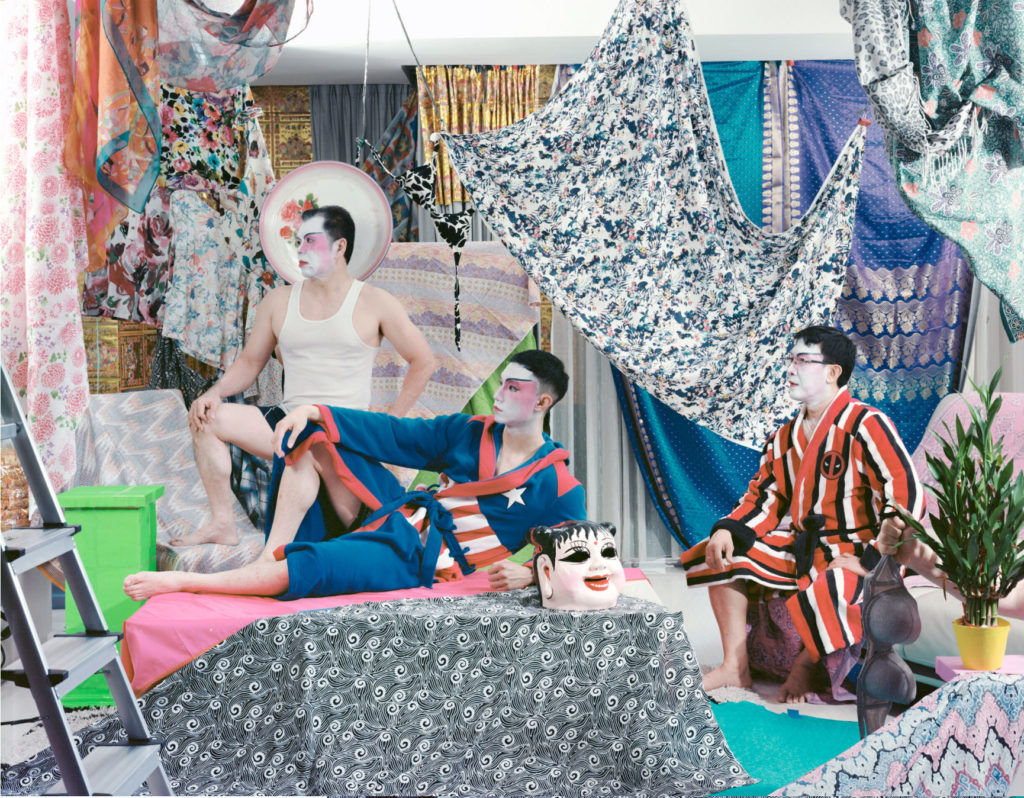The Fabric of our Lives
Posted on April 15, 2021
Opening May 15, Weston Art Gallery exhibits Material Message: Photographs of Fabric.
We’re surrounded by it, but we hardly give it a second thought: Fabric literally covers our bodies and homes, and it can change, represent, and even help create our identities. To explore this relationship, the Weston Art Gallery is showing photographs and other works, curated by Mount Vernon–based photographer Marcella Hackbardt, beginning May 15. The exhibition title, Material Message, hints at the show’s thesis: That fabric communicates meaning in our shared lives, for each other and for ourselves.
We spoke with gallery director Dennis Harrington, who talked us through some highlights of the exhibition and how it interacts with Weston’s downtown space.
FotoFocus: What can visitors to Material Message expect from the exhibit?
Dennis Harrington: There are seven artists that are represented in the exhibition from across the country, including Patty Carroll (Chicago, IL), William Hundley (Austin, TX), John Mann (Tallahassee, FL), Selina Román (Tampa, FL), Jacinda Russell (Indianapolis, IN), Leonard Suryajaya (Chicago, IL), and Morgan Ford Willingham (Emporia, KS).
The exhibition will primarily be framed photography, with the exception of Suryajaya, who in addition to the photography he’s contributing to the exhibition, will be completing an installation in the Weston street-level gallery.
It will be a stage set that we’ll build, a series of freestanding walls that will mimic a newsstand. It’s a play on the word newsstand to new stand, and [will have] some aspects of dealing with the impact of the pandemic.
FF: How is the Weston Art Gallery particularly suited to this exhibition?
DH: The lower gallery is the traditional white box space that can accommodate the photography quite nicely. And we have a unique opportunity in that we have two levels at the Weston—one a very public space, this street-level glass box space, which Leonard [Suryajaya] has taken full advantage of. The public space is perfectly suited for what Leonard wants to do with his work. And we have the opportunity to have that presence at the street level.
FF: Your street-level gallery sort of spills out into the city, and also interacts with the Aronoff’s audience.
DH: Of course, typically we’d have much more interaction because the Weston is located within a performing arts center. There would be performances that are currently not happening, we would have a ton of people coming through the street-level space to interact with Leonard’s piece. That’s sadly not the case at the moment. And in fact, this show was originally scheduled for last year in a similar time frame. And it was a victim of the pandemic and the closures. We closed from March through mid-July and the shows that were scheduled for that time were all postponed. I put them back in the schedule this year, which has been kind of a hybrid schedule of new shows and shows that have been rescheduled. And Material Message is one of those.
FF: It seems important that people in the city are able to see your gallery open and at work.
DH: And I’m grateful to be open. We are seeing an uptick of people out on the streets. We are having people come in and our numbers are pretty comparable to what we’d typically have in daytime attendance. What we’re missing, of course, is the tours we would do, the opening receptions we would do, but also the evening attendance where the numbers are bumped up considerably. We’re missing that.
But I think it’s important for us to have a presence in this time and to slowly work our way back up to what we consider a state of normalcy. The fall will bring that back, but time will tell how we do.
FF: Is there any interrogation in this exhibition of the, say, public or political life of fabric? Like the ethics of the textile industry?
DH: The veiled series by Patty Carol suggests the notion of religious implications. And from Morgan Ford Willingham, the veiled subjects certainly connect directly to the pandemic and masks and some of the things that we’re dealing with now. Suryajaya’s work has always had a kind of socially conscious aspect in terms of how he’s addressing perceptions of gender and race and sexuality.
FF: Material Message is primarily lens-based, but the interaction with fabric is interesting, too.
DH: It’s something we all have an association with, of course, in our lives: in the clothes that we wear and the things that we encounter on a daily basis in our homes, in our home environment. So it can operate on so many different levels in terms of expressions of who we are. The patterns, different materials — a number of these artists have veiled subjects looking through translucent material.
So much of artwork is artists taking things that are ever-present in our everyday lives that we don’t stop to consider that much. So much of what artwork does is open your eyes to what we might consider mundane, everyday experiences and really transport us to a whole other language.
Ultimately, Material Message conveys the personal, intimate, day-to-day relationships that we have with textiles and fabric, literally through the artist’s lens.
Material Message: Photographs of Fabric, Weston Art Gallery, May 15–June 26.
